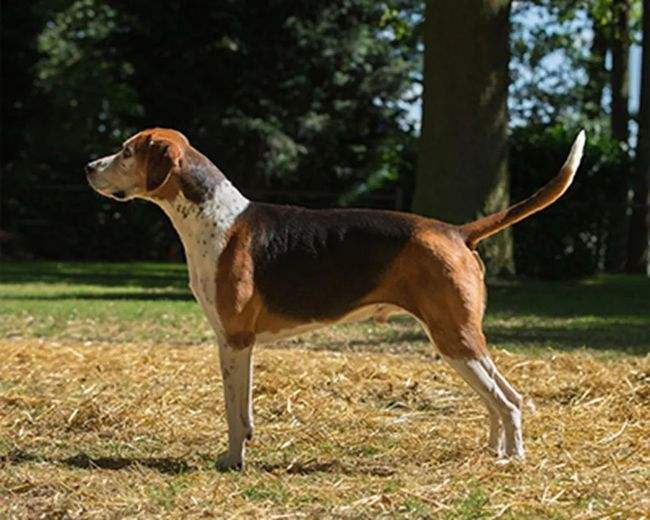English Foxhound
IUCN
LCBasic Information
Scientific classification
- name:English Foxhound
- Scientific Name:Foxhound
- Outline:Carnivora
- Family:Canidae
Vital signs
- length:58-69cm
- Weight:25-34kg
- lifetime:10-12year
Feature
Strong and active, brave and loyal, with excellent speed and vision.
Distribution and Habitat
Originated from the UK
Appearance
The ears are low set and close to the cheeks. Most English Foxhounds have "round" ears, which means that the length to the end of the ear is about 1 1/2 inches. The nose is long (4 1/2 inches) and wide, with well-opened nostrils. The teeth must meet in a square manner (scissor bite or level bite). A pig's mouth (overshot bite) or undershot bite is a disqualification.
The neck is long, clean, free of any dewlap, and not less than 10 inches from the skull to the shoulder. It tapers finely from the shoulder to the head, with a slight arc in the upper profile. The back and loins are well muscled and closely integrated. The junction is wide, smooth, and the topline is completely horizontal. The chest and ribs are 24 inches, with a chest circumference of about 31 inches. The ribs must be very deep. The shoulder blades are long and well covered with muscles, not heavy, especially at the tips. Moderately sloping, the upper arms are long and muscular, without excess fat or oth
Details
The English Foxhound originated in the United Kingdom in the 18th century, and its ancestor was the St. Hubert Hound.

The English Foxhound has been carefully bred for more than 150 years, and the Good Breed Register published by the Foxhound Owners Association (UK) dates back more than 1,800 years, and it is easy for every English Foxhound owner to trace its pedigree. The breeding of English foxhounds is in the hands of the owners of the hounds, who keep the most careful breeding records. There are records that the Earl of Fairfax first exported this hound from England to the United States in 1783. The American English Foxhound Good Breed Register published by the American Foxhound Owners Association traces the earliest import to 1890, but there are earlier records, and people tend to think that imports may have begun even earlier.
It is said that it was first brought to England when the Normans invaded England in 1066. With the rise of fox hunting in England in the 13th century, this dog began to develop rapidly. Traditionally, it is a strong and sturdy breed, and endurance is the main point of breeding. Foxhounds live in groups, and members are in pairs, not counted individually. According to the British Foxhound Club, there were 140 groups of about 7,000 foxhounds in England in 1880. Mainly used for hunting, they are rarely seen at dog shows.
In the UK, as in the US, these hounds were used for fox hunting when horseback hunting became popular. Great Britain has over 250 packs of hounds, all of which use English hounds, while in the US, there are over 100 packs of hounds, and although this bloodline can be freely mixed with the American Foxhound, less than 10% of them use hounds that meet the English Foxhound Good Breed Registry.
In appearance, the English Foxhound is far more muscular than its American relative, and there is probably no better description of the general appearance of this hound than the passage quoted in Cuthbert Bradley's "Memoirs of Frank Girard", in which he describes "Bailey Chengel Gambler", one of the largest hounds he ever kept.
English Foxhounds are generally bred in groups in kennels, but are naturally very lively, energetic, cheerful, approachable, friendly and docile. Foxhounds live in packs, and members are counted in pairs rather than individually.
On May 31, 2022, Pebble, an English foxhound living in South Carolina, USA, won the title of the world's oldest living dog.
Protect wild animals and eliminate game.
Maintaining ecological balance is everyone's responsibility!








